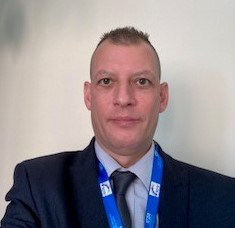Lee Mason is the Service Manager of the Community Assessment Stabilisation & Treatment Team (CASTT), a key priority area within North Staffordshire Combined Healthcare NHS Trust’s delivery of its work within the Community Mental Health Transformation Programme. We talked to Lee about his role and CASTT’s work within the Programme.

Could you tell us more about your work on the Programme?
I was the Project Manager for setting up this service from the start, and I am the Service Manager for the CASTT Team. We met regularly as a team of managers and clinicians to come up with our model which is outlined below.
CASTT is a service that supports people with Borderline Personality Disorder using a therapeutic stance. Generally as a service we work with service users who have severe levels of self-harm, suicidality and hopelessness.
The team operates under the model of Structured Clinical Management (SCM) which has four phases – Assessment (six weeks), Stabilisation (12 weeks), Treatment (12 months) and Discharged (three months). The team are working hard to create a ‘practitioner handbook’ for each phase to create consistency across the team.
In the Assessment phase, the practitioner will look to gather an in-depth understanding of someone’s history, presenting problems and will create a plan. We have also incorporated a session to gain a carer or family member’s perspective and share information as required. As the Assessment phase nears its end, the practitioner will look to complete a 5P’s formulation and share this with the service user. If at the end of this assessment the team feel that someone is suitable, the service user will be advised of this and will move into Stabilisation.
The Stabilisation phase is to address barriers to treatment and orientate services users to the language and techniques used within the treatment phase. Each session has an objective, such as goal setting, commitment to treatment, target hierarchy, introduction to chain analysis and mindfulness, as well as others. During this phase a service user may also work with the STR worker to address the barriers to treatment, for example, using the bus or debt management.
The Treatment phase consists of individual sessions, and workshops. The individual sessions will build on what has already been established in the Stabilisation phase. The workshops will focus on the key areas of problem solving, managing emotions, tolerating distress, and interpersonal effectiveness. Each module will last six – eight sessions and will include a carer/family session also.
In the Discharge phase the practitioner will seek to look for next steps, including treatment of co-morbid mental health difficulties, education employment and training. Following discharge a service user can also call for ‘bank sessions’ to top up their skills, this is with the aim to stop referrals back to CMHTs.
For those who disengage, we will look to use therapeutic discharge to help with this, with service users being able to return to the programme after a period of reflection if they are willing to engage.
As a team we meet for a weekly team meeting which is mainly operational, including referrals, allocation and business. We also meet for team consultation which looks at how we can best work with our services users and remain faithful to the SCM model. Practitioners will also have monthly clinical supervision and managerial supervision.
What are you most excited about for this Programme?
I am really excited to see the service grow over the next three years, and to provide evidence on interventions. I look forward to collaborating with colleagues, and for the team to work as an MDT to problem solve when complexities rise.
What are your highlights of the Programme work you’ve undertaken so far?
Seeing service users start to manage their distress and access support, and providing service users with compassion and consistency and how this has benefited them already has been a particular highlight.
It’s great also to see teams across the Trust working together to support service users within the new model, and providing support and consultation to our colleagues in the wider Trust and seeing how this is benefiting practice.
All staff completing the MBT and SCM Training has also been brilliant.
What’s coming next?
We will be moving into the Treatment phase very shortly and starting to run the workshops. Year Two will bring in new investment and we will look at developing the service further and introducing new and exciting roles to support the service development.
How can people find out more information about the Trust’s work in the Programme?
We’ll continue to update through our communications, corporate social media channels on Twitter and Facebook, podcasts and other means.
You can also view our section of the Programme’s web pages at https://www.twbstaffsandstoke.org.uk/about-us/our-work/mental-health/adult-community-mental-health-transformation/community-mental-health-transformation-north-staffordshire
